Do you have a question about the Wilo Star RS Series and is the answer not in the manual?
The circulating pump is used to pump liquids in pipe systems, not for drinking water or food liquids.
Details about heating circulating pumps, glandless pumps, and their specific types like RS, RSD, ST, RSG, AC.
Lists and defines numbered parts of the pump as shown in Figure 1, e.g., suction joint, terminal box.
Specifies fluids like heating water and water/glycol mixtures suitable for the pump, with viscosity considerations.
Highlights danger symbols for electrical causes and attention notes for pump/installation damage.
Emphasizes that installation and unit personnel must possess appropriate qualifications for the work.
Details risks of personal injury or pump damage from not following safety rules, potentially invalidating warranty.
Operator must observe local regulations for accident prevention and exclude electrical dangers.
Inspection and installation must be performed by qualified specialists who have studied these instructions.
Alterations require manufacturer agreement; use original spare parts for safety and warranty.
Guaranteed safety requires operation according to paragraph 1, not exceeding specified limit values.
Protect pump with electronic components from moisture, mechanical damage, and temperature extremes.
Lists the complete pump, flat gaskets, and installation/operating instructions included in the delivery.
Details the wet-running design, lack of shaft seal, and self-cooling lubrication of bearings and rotor.
Lists accessories like pipe connection inserts, switchgear for double pumps, and thermal insulating units.
Emphasizes qualified personnel, completing pipework, rinsing, and ensuring pump accessibility.
Mount pump horizontally, note flow arrow, secure against twisting, and orient motor housing as needed.
Connection by qualified electrician using proper wire, switch, and checking mains data.
Details how to fill the unit with water and perform necessary venting procedures to ensure proper function.
Explains adjusting pump speed using a rotary button for optimal heating and noise reduction.
Prior to maintenance or repair, the pump must be switched off and secured against unauthorized switching.
Troubleshooting steps for a motor that is switched on but fails to run, checking fuses, voltage, and capacitor.
Addresses causes of noise like cavitation due to insufficient pressure and suggests speed adjustments.
All rating plate data must be stated when ordering spare parts to ensure correct identification.
The circulating pump is used to pump liquids in pipe systems, not for drinking water or food liquids.
Details about heating circulating pumps, glandless pumps, and their specific types like RS, RSD, ST, RSG, AC.
Lists and defines numbered parts of the pump as shown in Figure 1, e.g., suction joint, terminal box.
Specifies fluids like heating water and water/glycol mixtures suitable for the pump, with viscosity considerations.
Highlights danger symbols for electrical causes and attention notes for pump/installation damage.
Emphasizes that installation and unit personnel must possess appropriate qualifications for the work.
Details risks of personal injury or pump damage from not following safety rules, potentially invalidating warranty.
Operator must observe local regulations for accident prevention and exclude electrical dangers.
Inspection and installation must be performed by qualified specialists who have studied these instructions.
Alterations require manufacturer agreement; use original spare parts for safety and warranty.
Guaranteed safety requires operation according to paragraph 1, not exceeding specified limit values.
Protect pump with electronic components from moisture, mechanical damage, and temperature extremes.
Lists the complete pump, flat gaskets, and installation/operating instructions included in the delivery.
Details the wet-running design, lack of shaft seal, and self-cooling lubrication of bearings and rotor.
Lists accessories like pipe connection inserts, switchgear for double pumps, and thermal insulating units.
Emphasizes qualified personnel, completing pipework, rinsing, and ensuring pump accessibility.
Mount pump horizontally, note flow arrow, secure against twisting, and orient motor housing as needed.
Connection by qualified electrician using proper wire, switch, and checking mains data.
Details how to fill the unit with water and perform necessary venting procedures to ensure proper function.
Explains adjusting pump speed using a rotary button for optimal heating and noise reduction.
Prior to maintenance or repair, the pump must be switched off and secured against unauthorized switching.
Troubleshooting steps for a motor that is switched on but fails to run, checking fuses, voltage, and capacitor.
Addresses causes of noise like cavitation due to insufficient pressure and suggests speed adjustments.
All rating plate data must be stated when ordering spare parts to ensure correct identification.
| Max Operating Pressure | 10 bar |
|---|---|
| Speed Stages | 3 |
| Housing Material | Cast Iron |
| Type | Circulator Pump |
| Application | Heating and cooling |
| Fluid Temperature Range | -10°C to +110°C |
| Connection Type | Threaded |
| Power Supply | 230V, 50Hz |
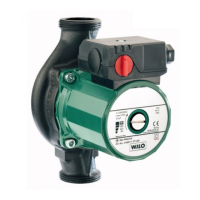
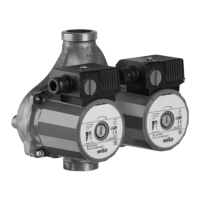
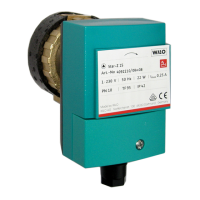
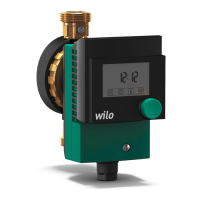
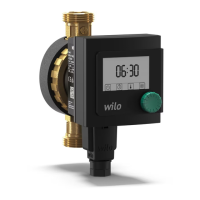
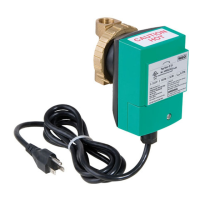



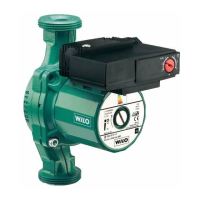


